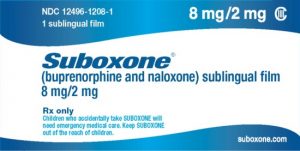
Just last week, Governor Wolf announced that he, along with the departments of Aging, Drug and Alcohol Programs, Health, and Human Services, successfully secured a federal grant of $26.5 million in the fight against opioid addiction. After filing a joint application for the funds, the federal government deemed it necessary to appropriate the said amount to the Commonwealth. Many are calling it a ground-breaking, revolutionary milestone for the state of Pennsylvania, but what does this grant really entail, and where will the money be going?
The federal grant is funded through the 21st Century Cures Act, which was signed by President Obama in December 2016. The Act’s intended purpose is to fund an increase in treatment and research for fatal illnesses, such as cancer and Alzheimer’s, mental health and opioid addiction treatment, and speed up the FDA’s drug approval process. The passage was of a bipartisan effort, with a sweeping 95-4 vote in the Senate, allowing for over $6 billion in funding. $1 billion of that allotted amount has gone directly toward substance abuse treatment and prevention methods, for all 50 states, namely those who suffer from opioid addiction.
The determination of allocated funds was based upon the overdose rates within each state in 2016 and the estimated number of untreated opioid users. Pennsylvania received the fourth largest grant award, coming in behind California, Texas, and Florida. The Commonwealth is regrettably no stranger to opioid addiction and epidemic, losing 10 people a day to heroin and opioid overdoses. This grant has come at a time when we definitely need it most, but again, specifically where will the money go? The generic answer always sounds something like, “funding will be allocated for new prevention methods, treatment resources, etc., etc.” What does that really mean? We are hoping to shed some light on where this funding will be utilized, nevertheless, only time will show how the Governor and his colleagues plan to spend the grant.
The Grant Award Requirements
The National Association of State Alcohol and Drug Abuse Directors (NASADAD) released an analysis of how the opioid grant program, within the Cures Act, will work and what activities will be permissible. According to the NASADAD, those activities may include:
- Improving State PDMPs, otherwise known as prescription drug monitoring programs.
- Increased training for health care practitioners in regards to best practices for the prescribing methods of opioids, recognizing potential addiction cases, pain management, and referrals to treatment providers when necessary.
- Implementing new prevention methods, and identifying strategies that would be effective toward preventing opioid addiction.
- Other public health activities that the State deems appropriate in regards to addressing the opioid crisis within that state.
- And lastly, but most highlighted, supporting access to health care services, especially those services that include Federally certified opioid treatment programs (OTPs) and other health care providers that are trained in treating substance abuse.
Understanding The FOA
The interesting point to know in all of this, is that the funds are dispersed through the Substance Abuse and Mental Health Services Administration (SAMHSA). When grants are awarded, SAMHSA releases what is called an FOA, or a Funding Opportunity Announcement. When reviewing the FOA, many things have become clear, but one thing in particular, is the preferred method for treatment…medication-assisted treatment (MAT). While many factors are required for a state to receive an award grant, the language within the FOA leans strongly in the direction of keeping medication-assisted treatment at the forefront of addressing opioid addiction.
Under Required Activities the FOA states, “Implement or expand access to clinically appropriate evidence-based practices (EBPs) for OUD treatment, particularly, the use of medication assisted treatment (MAT), i.e., the use of FDA-approved medications (e.g., methadone, buprenorphine products including buprenorphine/naloxone combination formulations and buprenorphine monoproduct formulations, naltrexone products including extended-release and oral formulations or implantable buprenorphine) in combination with psychosocial interventions.”
When read further, under Fund Restrictions & Limitations you’ll find the following:
“Funds may not be expended through the grant or a subaward by any agency which would deny any eligible client, patient or individual access to their program because of their use of FDA-approved medications for the treatment of substance use disorders. Specifically, patients must be allowed to participate in methadone treatment rendered in accordance with current federal and state methadone dispensing regulations from an Opioid Treatment Program and ordered by a physician who has evaluated the client and determined that methadone is an appropriate medication treatment for the individual’s opioid use disorder. Similarly, medications available by prescription or office-based implantation must be permitted if it is appropriately authorized through prescription by a licensed prescriber or provider. In all cases, MAT must be permitted to be continued for as long as the prescriber or treatment provider determines that the medication is clinically beneficial. Grantees must assure that clients will not be compelled to no longer use MAT as part of the conditions of any programming if stopping is inconsistent with a licensed prescriber’s recommendation or valid prescription.”
Medication-Assisted Treatment Is Not Enough
As you can see, based on the documents and requirements surrounding the grant, medication-assisted treatment is the preferred method of treatment for OUD’s, or opioid use disorders. When you couple this with Governor Wolf’s support of MAT, it is pretty safe to say that the majority of the $26.5 million grant will go toward supplying more medications to the addicted community. Although many politicians and doctors believe this modality to be the most beneficial, throwing around the words, “evidence-based treatment,” we ask, evidenced by what?
With our decades of experience, the only evidence we have found medications, such as Suboxone, Methadone, and Naltrexone to show, is prolonged addiction and/or the delayed process of addiction. What we mean by that is, while these medications may prove to be helpful in some instances, for many, it just delays the inevitable. Eventually, most addicts return back to active use of drugs such as heroin or prescription pain killers. For others, they become addicted to these medications…the same ones that held the promise of saving them from addiction.
Yes, the grant will most definitely address gaps within the state regarding opioid addiction, and will provide care to an estimated 6,000 uninsured or underinsured Pennsylvanians, as well as offer new prevention strategies to our youth. However, having a large sum of the award directed toward prescribing addictive medication to those already afflicted with chemical dependency is reckless, irresponsible, and lazy. Additionally when we take into consideration one keep component of the Cures Act, which allows for the FDA to speed up their approval process of medications, we have a recipe for disaster. Surely, new opioid-treatment medications will hit the market soon enough.
Rather than relying on medications as we always do, the gaps that need to be focused on are the lack of treatment availability throughout the state and better insurance reimbursement for substance abuse treatment, namely those that suffer with opioid addiction.
Wrapping Up
Medication is NOT treatment; it IS harm reduction. For some, it is necessary until they are ready to receive help, but this is should be the exception…not the rule! Yes, it keeps addicts alive, but at what cost? The quality of life is not what it could be, compared to that of an addict living in recovery, completely abstinent from ALL substances. It’s quite ironic how it works. Medication-assisted treatment lowers the death rate, which in turn shows up in statistical data across the country. The government then uses those numbers to rave about how this treatment shows evidence of being beneficial…or “evidence-based treatment.” Then this modality becomes the gold-standard for opioid addiction, only to leave us where in 10 years from now? What is the end goal in all of it? Just as Big Pharma promoted OxyContin as a NON-ADDICTIVE drug, Suboxone, Subutex, and Propubine are now being pushed down our throats…no pun intended.
If abstinence-based treatment or fellowships like AA and NA didn’t work, millions wouldn’t be alive today. If drugs were the answer, they would’ve proven to be so by now. Methadone is not a new concept, nor is treating addiction with a chemical. Heroin was first produced to address morphine addiction…we see how well that worked out. History has a funny way of repeating itself…do we really want to look back in a decade and regret ever allowing this? Allowing the creation of another addicted generation.
Contact Clearbrook For Opioid Addiction
For more than 40 years, Clearbrook Treatment Centers has been providing effective treatment to those suffering from alcoholism and drug addiction. If you or someone you love has found themselves addicted, we can help. We have had the privilege of watching many recover from a seemingly hopeless state of mind and body, free from ALL mood and mind altering substances. If you are struggling with opioid addiction, please contact our Admissions Specialists today. Let us show you what abstinence-based recovery looks like.








